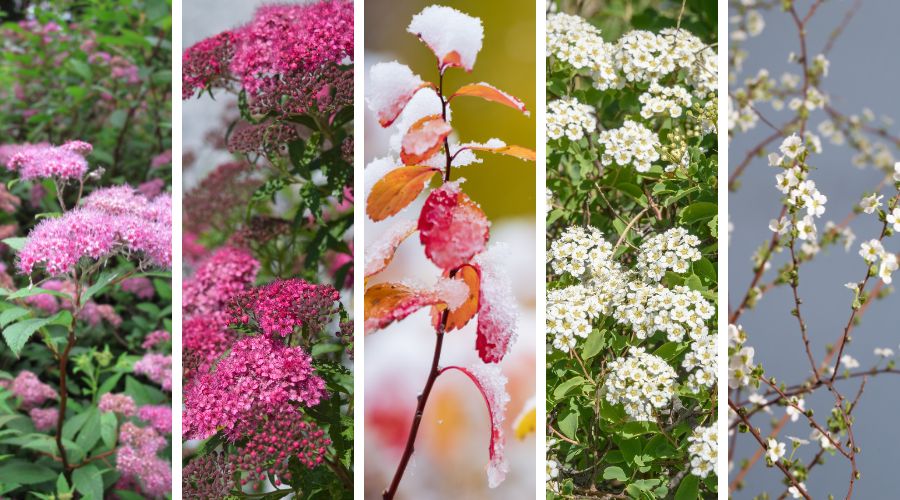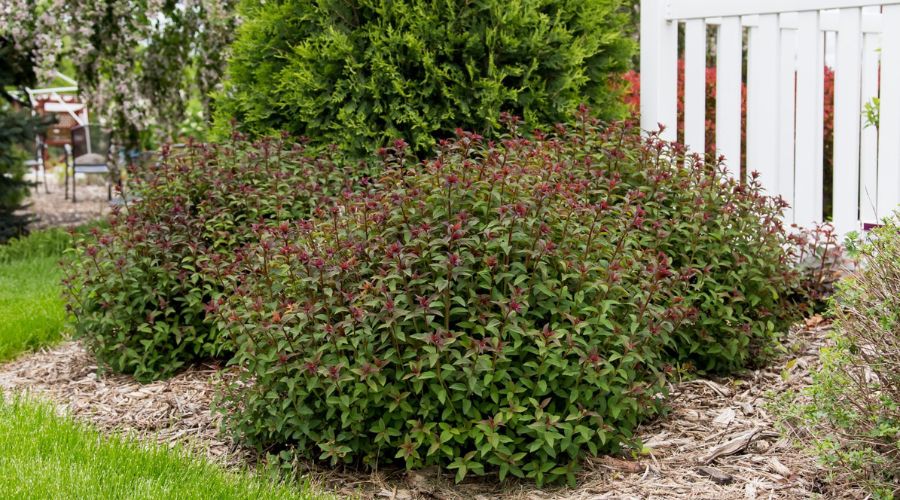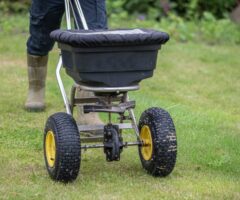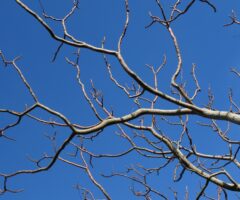This fact sheet is provided as an educational service of the National Garden Bureau. You can view the original at ngb.org/year-of-the-spirea/.
There is so much to celebrate about spirea.
These durable, easy-to-grow shrubs have dominated many regions of the United States for decades thanks to their tolerance for a wide variety of conditions.

Overview and History
The genus name, Spirea, originates from the Greek word, speira, or “wreath” in reference to the orientation of the shrub’s delicate flowers. With nearly 100 unique species, this hardy group of plants boasts a wide range of colorful foliage ranging from blue to yellow, red, to orange, and everything in between. They truly are America’s heartland landscape plant.

Basic Types
While there is a multitude of spirea types, the most common sold commercially are:
- Japanese spirea (Spiraea japonica): known for their wide flower and foliage color range, and their low-growing, mounding form.
- Bumalda spirea (Spiraea x bumalda): similar to Japanese spirea, they are a cross between Spiraea albiflora and Spirea japonica. Flower colors range from white to deep pink.
- Birchleaf spirea (Spiraea betulifolia): known for their larger, blue-green, birch-like leaves and stunning fall color.
- Korean spirea (Spiraea fritschiana): native to forests, slopes, and rocky areas and, like most spirea, attractive to butterflies.
- Vanhoutte, or Bridal Wreath, (Spiraea x vanhouttei): known for their vase-shaped habit, flowing, arching branches, and cascading showy spring blooms.

From top left to bottom right, going left to right: Butterscotch Baby from Monrovia, Double Play Doozie from Spring Meadows, Firegold from First Editions, Poprocks Petite from Vanbelle, Little Spark from Bailey Nurseries, and Tor Birchleaf. All images courtesy of National Garden Bureau.
Variety/Series Names
With so many to choose from, there are varieties that will suit any home landscape and garden. Here are a few notable selections:
- Little Spark® – a compact spirea with orange new growth that holds its yellow leaves throughout the summer, even in full sun. Height: 18-24”. Width: 18-30”.
- Rainbow Fizz™ – a burst of color with candy-like buds that emerge red, opening to pink. Height: 3-4’. Width: 3-4’.
- Pink Sparkler™ Birchleaf – a pink birchleaf selection that blooms in early summer and then again in autumn, when new flowers appear for a pop of color late in the Height: 3-4’. Width: 3-4’.
- Tor Birchleaf – a compact mound of dark, gray-green, birch-like leaves that sport tiny white flowers in late spring. Also boasts amazing fall color. Height: 3-4’. Width: 3-4’.
- Glow Girl® Birchleaf – a great plant for those who need easy, adaptable color for colder climates due to its lemon-lime foliage. Height: 3-4’. Width: 3-4’.
- Superstar® – a plant with true three-season appeal thanks to its stunning, scarlet red new growth in spring, its pink blossoms May-August, and its excellent bronze fall color. Height: 2-3’. Width: 3-4’.
- Double Play Doozie® – makes a great landscape statement with its constant red blooms that show all summer long. Height: 2-3’. Width: 2-3’. (Other Double Play varieties are Big Bank, Artisan, Candy Corn, Gold, and Red)
- Renaissance Bridalwreath –more disease-resistant foliage than other bridalwreath varieties, with classic white blooms that cover the plant. Height: 5-7’. Width: 6-8’.
- Firegold® –brilliant lemon-lime foliage, resembling bridalwreath spirea, that arches gracefully with lovely white blooms adorning the plant. Height: 4-6’. Spread: 5-7’.
- Goldflame – a dense, upright mounded shrub with bronze-tinged new growth in spring. Height 3-4’. Spread 4-5’.
- Dolchica – graceful dark mounds hold showy purplish flower clusters. Height 3’. Spread 4’.
- Snowmound – easy to grow with graceful, spreading branches and an abundance of white flowers. Height 3-5’. Spread 3-5’.
- Little Princess – showy flat-topped clusters of bright pink flowers bloom in early summer. Height 2’. Spread 3’.
Spirea How-To’s for Your Landscape
- These plants are fast-growing, even the most compact varieties, making them highly desirable for quick fill-in plantings, massing, hedges, and foundations.
- Spirea are deciduous, meaning they drop their leaves each fall and can usually handle winter just fine. They are hardy to USDA Hardiness Zones 4 – 8 and can tolerate winter temperatures of 15-30 degrees Fahrenheit.
- Best grown in full sun. Generally, those planted in shadier spots tend to become lanky and do not bloom as well. Once established, they are one of the lowest maintenance, easy-to-grow shrubs.
- Routine pruning of old wood can be done if the plants are getting larger than desired. It is best to prune after flowering. Thin out branches from the center to improve air circulation. Unlike some landscape plants, every few years you can prune spirea hard, by as much as two-thirds if you want to clean up overgrown plants.
- Deadheading, or removal of spent flowers, is not necessary. Flowering will be more prolific when the plants have adequate moisture in spring and summer. Mulching with wood chips or shredded bark will help retain moisture.
- If you live in urban areas, have no fear, spirea are well suited to tolerate poor soil, pollution, drought, heat, and extreme cold temperatures. They prefer well-drained soil that should be kept moist their first year, watering deeply, especially during the hot summer months. Once established, minimal supplemental watering should be needed. While fall is the best time to plant, they can be planted anytime during the growing season.
- Spirea are generally not preferred to be grazed on by wildlife such as deer and rabbits. However, their beautiful blooms attract the happiest show of butterflies, bees, and other pollinators.
Visit Bay Landscaping for our Selection of Spirea Plants
Bay Landscaping’s nursery has a variety of spirea plants available for your Michigan yard or garden. Or, if you prefer, we can help you design your landscape and incorporate spirea plants where they would be best suited.
Learn more about our Landscape Design Services >>
Spirea is a versatile shrub with many varieties, colors, and foliage options to choose from. Visit Bay Landscaping soon to see what varieties we have in stock!
Download the Spirea Fact Sheet from the National Garden Bureau








